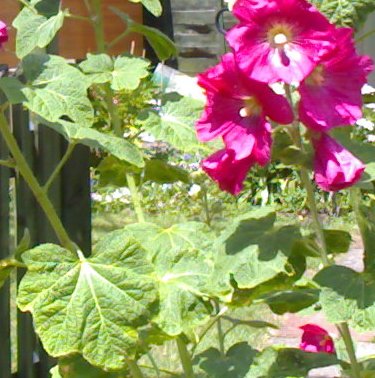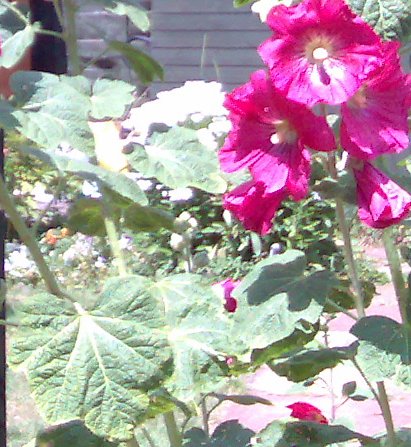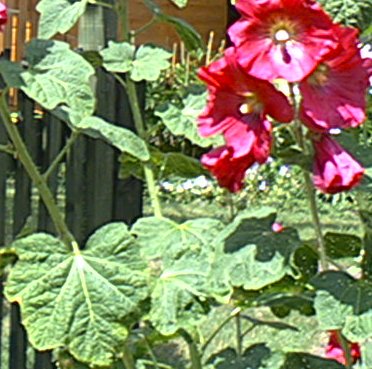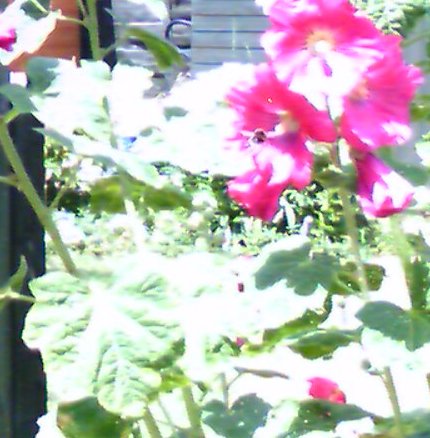It's easy to get swayed by figures, especially when talking about cameras, or in this case, cameras within smartphones. The megapixel number, i.e. the number of resolved pixels in each image at maximum resolution (e.g. 1600 by 1200 = roughly 2000000 pixels, or two megapixels), is perhaps that quoted most often, but it's only a very rough guarantee that the camera is any good.
Behind the CMOS sensor itself are custom electronics, sometimes built-into the camera module, sometimes elsewhere in the device, to convert the mass of generated electrons into raw image data and then to compress it into JPEG format for storing on your smartphone's internal or expansion disk.
And don't forget the quality of the optics as well. Whether the camera has auto-focus or not, whether it's plastic or glass, whether it's set up properly, all play a major part in the quality of the final images.
 To test the real world performance of a good cross-section of current smartphone cameras, I took a sunny scene, with flowers around six feet away (to reflect a typical photo - though it had to be flowers since I couldn't find anyone else to stand still for me!) and snapped it with, in turn, the Nokia N70, N80, N90 and (to take in a typical/comparable camera from the Windows Mobile world) the i-Mate K-JAM. Before launching into the results, here are the specs:
To test the real world performance of a good cross-section of current smartphone cameras, I took a sunny scene, with flowers around six feet away (to reflect a typical photo - though it had to be flowers since I couldn't find anyone else to stand still for me!) and snapped it with, in turn, the Nokia N70, N80, N90 and (to take in a typical/comparable camera from the Windows Mobile world) the i-Mate K-JAM. Before launching into the results, here are the specs:
| Device | Photo resolution | Notes |
| Nokia N70 | 2mp | |
| Nokia N80 | 3mp | In 'landscape' mode, of course |
| Nokia N90 | 2mp | With auto-focus and Carl Zeiss optics |
| i-Mate K-JAM | 2mp | In its 'software interpolated' mode |
Having snapped each shot, I then cropped the same area of detail so that you can compare them right here in this article:
Nokia N70

Nokia N80

Nokia N90

i-Mate K-JAM

Conclusions
To help you compare all four at the same time, I've also resampled each cropped portion and appended them to each other:

From left to right: Nokia N70, N80, N90 and i-Mate K-JAM
Looking at raw megapixels, the N80 might fancy its chances of being the best camera, but you can see here the benefit of higher quality components - it's not all about how many million data points you sample. In this case, the N80's photos are washed out slightly and it's evident that the smartphone can't handle the contrasts between light and dark as well as its two predecessors. The N90's image was by far the clearest, due to its proper focussing and higher quality lens, but curiously the colours themselves were a bit subdued. The N70's photo is my favourite as it's handled the contrast well and yet retained the actual (pinkish) colour of the flowers.
(I won't even comment on the quality of the K-JAM's image, but suffice it to say that it's fairly typical of the camera modules I've tried from the HTC-made Windows Mobile world. This isn't a dig at the OS, far from it, merely an observation that HTC use ultra-cheap camera components while Nokia do their research properly and invest more money in this side of things.)
So, are megapixels the be all and end all when thinking about your next smartphone? Absolutely not. As usual with such expensive purchases, go with review comments and feedback from other satisfied (or dissatisfied) users!
